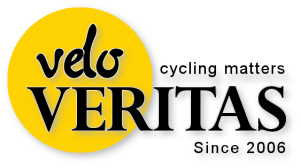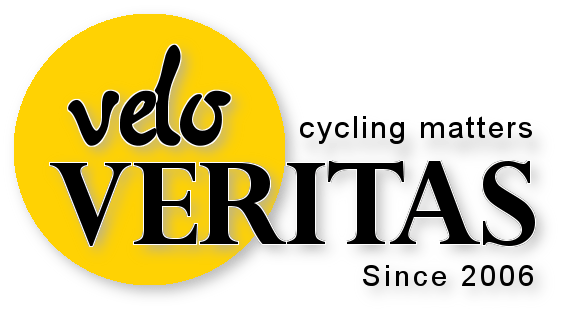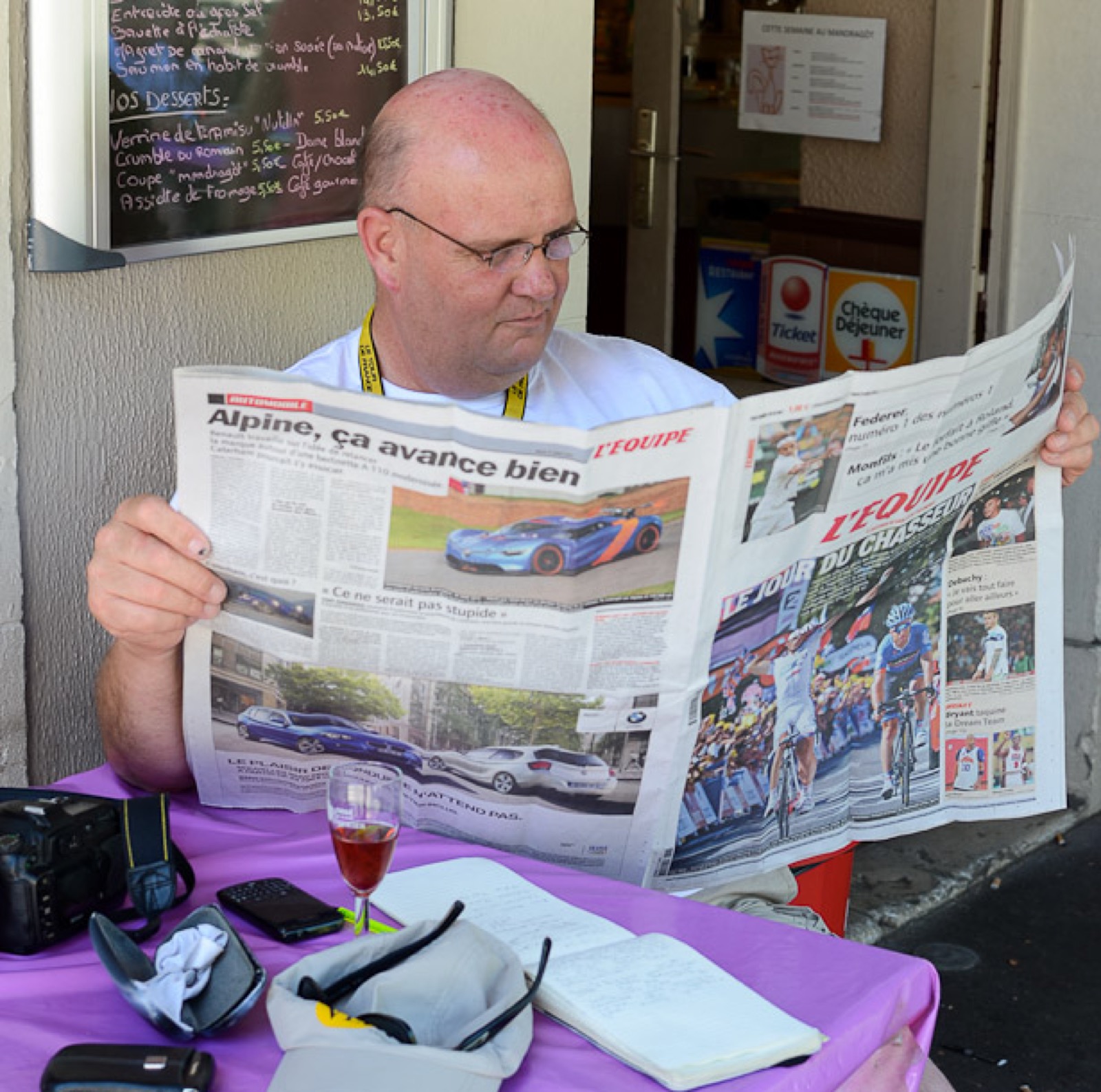In Part One of our Phil Edwards interview we heard how he was hugely successful on the ‘truly amateur’ British scene as he racked up the wins, competed in the fated Munich Olympics before heading to Italy in 1973 and making a name for himself in their savage amateur scene, winning big races by 1975.
He was able to step smoothly up into the glamorous – but cutthroat – Italian professional world, but not just with any old team, with Sanson, the ice cream company sponsored squadra of Italian Capo, Francesco Moser…
Your Giri were all in the service of Moser?
“Yes, although I did get second on stage to Paolini in ’78.
“A typical effort for me – if the race finished up some 15 K mountain – would to ride the 10 K into base of the climb on 53 x 13 to keep it strung out and prevent escapes.
“Then it was up to me how to get to the top…”
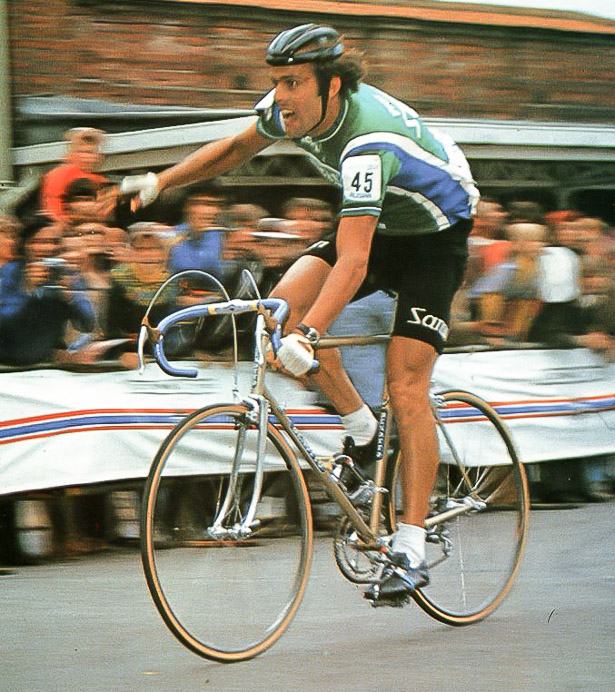
And you became the British pro champion in 1977.
“Yeah, I came back to London for that one; it was place to place, London to York, flat but 310 kilometres!
“I let the race evolve and at the finish with Medhurst and Wiles there I wasn’t sure I would win the sprint – they were both fast – so I took a flyer from the last corner and they couldn’t catch me.
“I used exactly the same tactic to win the British Junior Road Race Champs – hit the last bend flat out then hold on.
“But in 1978 they were all wide awake to me and I didn’t get away with that one again.”
What about the Moser/Saronni rivalry?
“That was real, yes – but you also had Baronchelli; he was always trying to force a crisis for Moser in the mountains.
“Saronni was only 21 and started as a track rider so he was quick; but he was from the mountains of the North whilst Moser was from Trento so there was a regional rivalry – a good rivalry for the press and public like the Anquetil/Poulidor rivalry.
“I think the sport lacks that just now, maybe the last one was Armstrong/Ulrich?”
How many race days did you do each year?
“I’d start with Laigueglia in February and race through to the Tour of Lombardy; one year I rode the Baracchi which was late in October.
“Then there were the Classics, the criteriums and you had 22 race days in the Giro alone – so probably around 100 plus race days?”
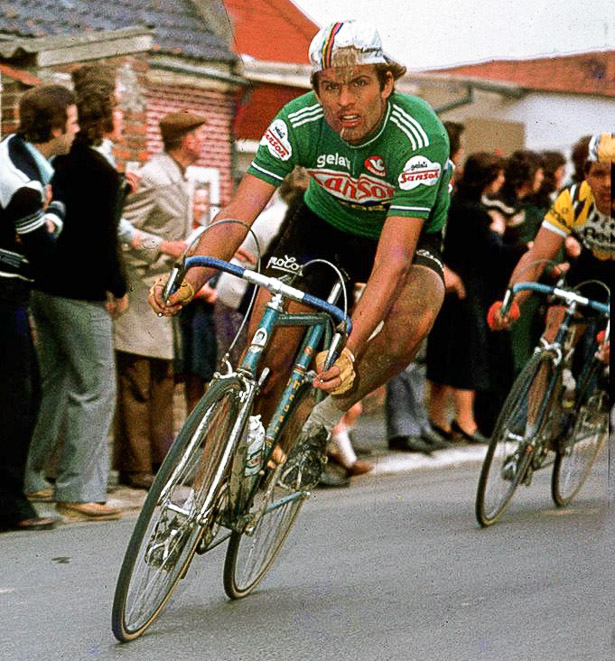
Why stop?
“I had a crash in the Giro, broke my wrist and ended up in plaster.
“During the time I was off the bike I started to get involved in importing Italian equipment into Britain.
“My mother was born in Treviso and lived there when she was young; she knew Pinarello, San Marco, Sidi – all those people.
“Her maiden name was Caratti and my brother Mark and I started an import/export business under that name – I was side-tracked.
“I had a contract with Famcucine for 1981 but I threw myself into the import/export business.
“I was involved in cycling clinics in Texas with Eric Heiden who rode for 7/11; the Giro organisers wanted me for a commentary role because I was fluent in English and Italian – and I did commentary for Italian TV for the Goodwood Worlds.
“But I had to make a decision and put all my energies into Caratti.
“And I introduced Specialized to Italy in 1985 and Trek in 1989 until they bought me out in 2010.”
So why France now, not Italia?
“I was married and lived in Bergamo but wanted my kids to have the best possible schooling so I got them into the International School in Nice – and there’s no hard north Italian winter beside the sea!”
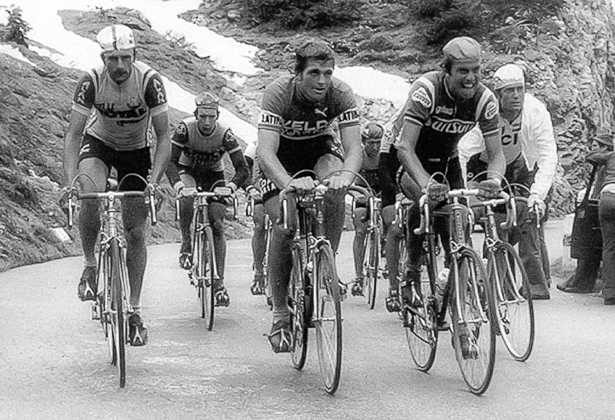
Are you still competitive?
“I got into yacht racing, long distance, Palermo to Monaco and trans Atlantic, the Canary Islands to Saint Lucia.
“There are 200 boats of all different classes in those races with vessels that can cost up to 80 million Euros – we finished 21st.
“It’s like riding a stage race, three hours on, there hours off and you’re racing all the time.”
Do you still follow pro cycling.
“Oh man!
“I have to sit down when I watch it, my legs start to ache!
“I bump into pros all the time; we’ve had Axel Merckx and Tom Boonen in the restaurant and Mario Cipollini was in, he said to me; ‘I recognise you – you used to race against my brother Cesare when he was a pro and I was 12 years-old!’
“But of course we have all sorts of celebrities in the restaurant too; quite a few Formula One drivers, Marco van Basten the football manager, Hugh Laurie, straight out of Hollywood…”
Your finest hours?
“In one of my Paris-Roubaix’s I was right there with the leaders at 18 K to go when I punctured – alongside Hinault and De Vlaeminck.
“After the race Moser said when he was interviewed that he owed a debt of thanks to his team mates Masciarelli and Edwards for the way they had ridden for him.
“And to make the podium of Italian semi-classics was pretty nice.
“I think as an amateur it was a good ride to finish right up there in the Milk Race, given the quality of the opposition.
“The Avenir was good too, top stage placings and a top ten on GC – it’s all been a great experience…”
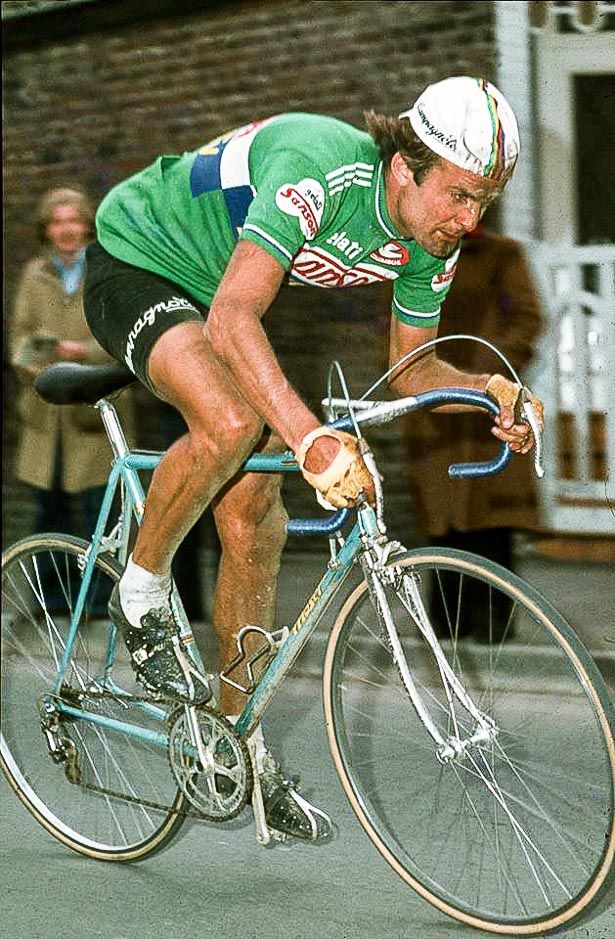
Regrets?
“I’m glad I did what I did with my life and didn’t get into pure maths and build satellites at British Aerospace where I worked before I got fully into the bike.
“Back then you had to be wealthy to fly – but I did and saw the world.
“I’d like to have seen what I could have done if I’d turned pro at an earlier age in Italy; but overall, I’ve no regrets.”
In the Outkast song, ‘Say ya,’ vocalist Andre 3000 asks the question; ‘Now what’s cooler than bein’ cool?’
The reply comes; ‘ice cold!’
He was obviously talking about Phil Edwards.
With a huge ‘thank you’ to Phil’s friend of many years and ace cycling photographer, John Pierce for the use of the magnificent images and help with the preparation of this piece.
